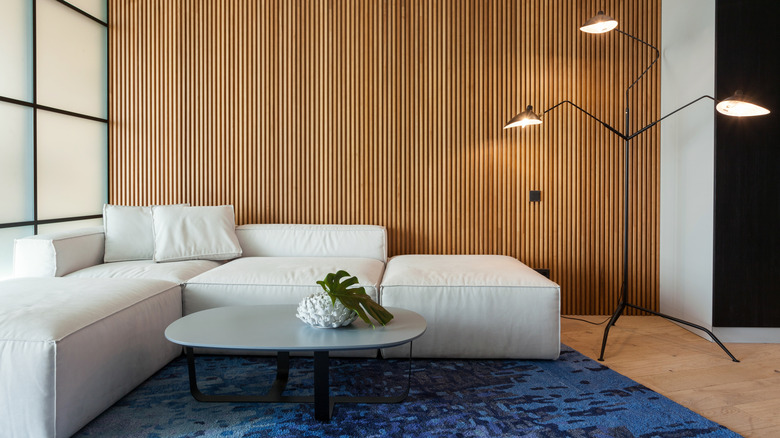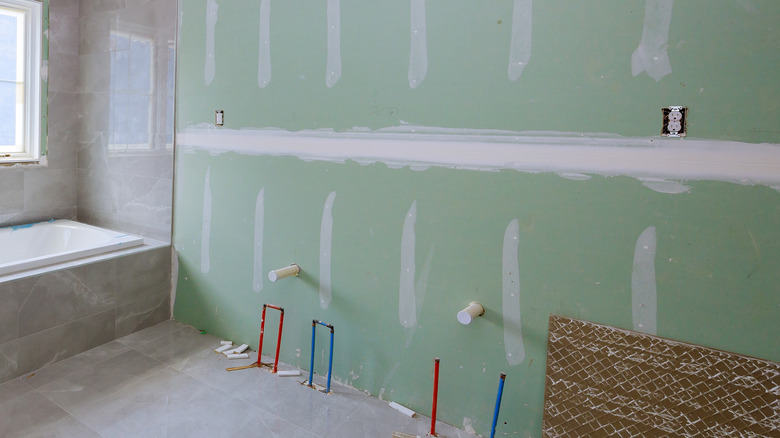What It Could Mean If Your Walls Are Warping
Walls can warp for many reasons, which vary depending on the type of walls you have, so it's important to consider what underlying issues could be at play. If you have interior paneling, the sheets are likely made of plywood which can expand or contract based on moisture in the air (via SFGATE). To protect from warping, installers should leave a ⅛-inch gap between each panel, allowing room for expansion. If the panels are installed too closely, there will not be enough room for swelling on humid days, which can cause the walls to bow or warp.
Another reason for warped interior paneling is using the wrong fasteners during installation. Because these panels expand and contract, SFGATE suggests using ring-shank nails, which are stronger than finish nails. When installing paneling, space ring-shank nails 8 inches apart to ensure the panels will not warp.
Since moisture in the air is the most common issue with panel walls, keeping the humidity down inside the home can also reduce or eliminate the frequency of warped walls.
Warped Drywall the culprit?
If you live in a home with drywall that is warped, or you see signs that the walls are starting to bow, the first step is to find the cause. Replacing damaged drywall can be costly and without finding the underlying reason, your new drywall will probably also become warped.
According to Airlift Concrete Experts, LLC, the drywall may warp because of excessive moisture. This problem may be due to high humidity, improper drainage, or insufficient waterproofing. A more significant issue, such as foundation failure, could result in warped walls in a basement. If you suspect this might be the issue, contact a foundation repair service to inspect your foundation before starting any repairs.
Once you have identified and resolved the cause of your warped drywall, you may want to remove and replace the drywall yourself or find a professional, insured contractor who can repair the damaged section for seamless, perfect walls.
Or maybe it's plaster walls
If you live in an older home, you may have plaster walls. According to Bob Vila, plaster was long considered the best wall construction method from the 1700s through the 1940s. It was not until the 1950s that drywall replaced plaster because it was faster and easier to install.
Moisture could be the cause of warped plaster walls, but there are often warning signs that allow you to take action before you have to completely replace the wall surface. Brown water stains appear very soon after a leak begins (via The Craftsman Blog). Fixing the leak immediately saves a lot of time and money. Although plaster walls are susceptible to moisture damage, that is not always the cause of a warped or bulging wall surface. Plaster sometimes comes loose from the wall, causing a bulge. In this case, the wall surface can sometimes be pushed back against the wall and reattached.
To ensure you make the right decision to repair your plaster walls, contact a contractor experienced in historic restorations.


